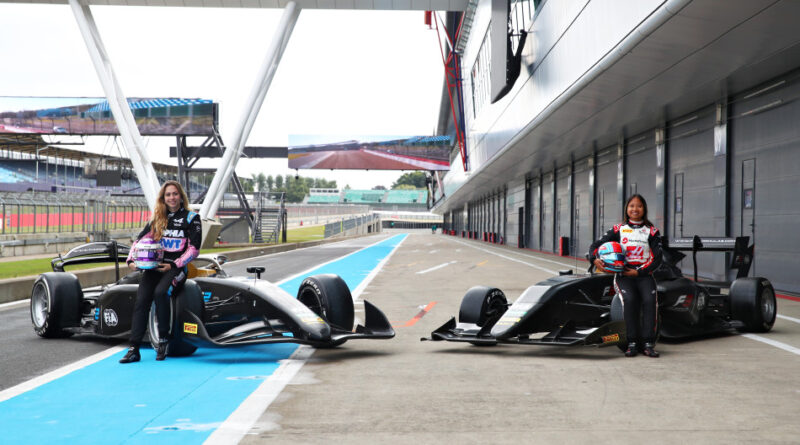F2/F3 – Working on the car of the future
FIA Formula 3 driver Sophia Floersch and F1 Academy driver Chloe Chambers have taken part in a Formula 2 and Formula 3 test, respectively, at Silverstone on July 12-13, to help define the set-up regulations of both the F2 and F3 cars in order to accommodate a wide range of drivers and make both championships as accessible as possible.

This two-day programme focused on a complete screening of all suspension set-up configurations used across the season in order to remain below the steering effort level defined by the FIA.
Throughout testing, both drivers were able to try a wide range of set-ups on different tyre compounds, thus working on braking, steering effort, positioning of the steering wheel, and overall, on ergonomics of the cars. The data collected and feedback from the drivers will help define the set-up limitations for the F2 and F3 teams in 2025.

Across the two days, Floersch completed a total of 96 laps at the wheel of the F2 2024. Chambers completed 97 laps in a hybrid F3 2019, with modified parts to simulate the behaviour and demands of the F3 2025 car.
Sophia Floersch said: “The purpose of the test was for Chloe and me to try out the Formula 3 and Formula 2 cars respectively, in terms of the steering effort because the FIA and Formula 1 Group want to make both championships more accessible to a wide range of drivers.
“I think the biggest differences were the two steering racks and also the caster changes. The more caster you put, the heavier it gets. With the steering racks, to be honest, I preferred the harder one because it is a lot more direct and you can be a lot more aggressive on the high-speed corners, which I think is important in order to have downforce in the cars. In general, as a driver you never really feel so many differences because we never really focus on steering effort, so I learned a lot across the two days.
“We also trialled different tyre compounds where the steering effort changes as well. We did a long run too, where it gets easier lap by lap. In the end I found a set up that I liked, which was the right balance of effort, while also having good control of the car and ability to be aggressive and actually have confidence to push.”
“The FIA and the F2/F3 promoters have a lot of simulations and goals that they want to reach for where they want to end up with regards to steering effort over the next months or years. I think it is good to see that they are working on it and compare real life data to their simulations. I was really lucky and happy to be one of the drivers to get the chance to drive the F2 car for the first time.”

Chloe Chambers said: “The purpose of the test was to get a feeling for the car and give my feedback on the handling, the steering weight, the balance, and other things that can be improved for the next generation. This is an important process to make our sport more accessible for everyone on the ladder to Formula 1. Of course this is only the beginning, but I think the test is a positive step and that we can make a big difference. I did a lot of laps in different conditions and on different tyres, so I am hopeful that my feedback and data will be helpful to make the cars as accessible as possible.”

